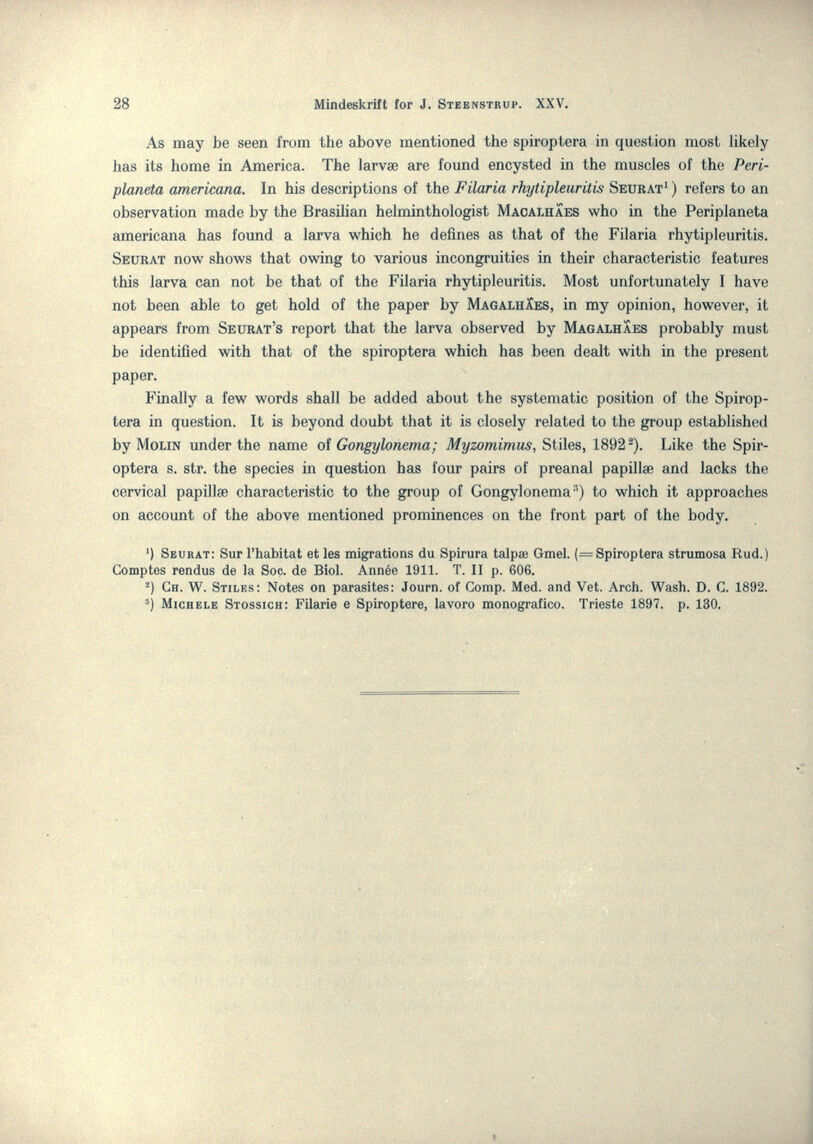
Full resolution (JPEG) - On this page / på denna sida - Contributions to the Biology and Morphology of Spiroptera (Gongylonema) Neoplastica n. sp.

<< prev. page << föreg. sida << >> nästa sida >> next page >>
Below is the raw OCR text
from the above scanned image.
Do you see an error? Proofread the page now!
Här nedan syns maskintolkade texten från faksimilbilden ovan.
Ser du något fel? Korrekturläs sidan nu!
This page has been proofread at least once.
(diff)
(history)
Denna sida har korrekturlästs minst en gång.
(skillnad)
(historik)
As may be seen from the above mentioned the spiroptera in question most likely
has its home in America. The larvæ are found encysted in the muscles of the
Periplaneta americana. In his descriptions of the Filaria rhytipleuritis Seurat[1] refers to an
observation made by the Brasilian helminthologist Macalhães who in the Periplaneta
americana has found a larva which he defines as that of the Filaria rhytipleuritis.
Seurat now shows that owing to various incongruities in their characteristic features
this larva can not be that of the Filaria rhytipleuritis. Most unfortunately I have
not been able to get hold of the paper by Magalhães, in my opinion, however, it
appears from Seurat’s report that the larva observed by Magalhães probably must
be identified with that of the spiroptera which has been dealt with in the present
paper.
Finally a few words shall be added about the systematic position of the
Spiroptera in question. It is beyond doubt that it is closely related to the group established
by Molin under the name oi Gongylonema; Myzomimus, Stiles, 1892[2]. Like the
Spiroptera s. str. the species in question has four pairs of preanal papillæ and lacks the
cervical papillæ characteristic to the group of Gongylonema[3] to which it approaches
on account of the above mentioned prominences on the front part of the body.
<< prev. page << föreg. sida << >> nästa sida >> next page >>